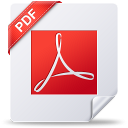- NUR Home
- →
- 02.National Laboratory Astana
- →
- Articles
- →
- View Item
JavaScript is disabled for your browser. Some features of this site may not work without it.
Система будет остановлена для регулярного обслуживания. Пожалуйста, сохраните рабочие данные и выйдите из системы.
| dc.contributor.author | Kauanova, Sholpan
|
|
| dc.contributor.author | Urazbayev, Arshat
|
|
| dc.contributor.author | Vorobjev, Ivan
|
|
| dc.date.accessioned | 2021-05-11T10:16:58Z | |
| dc.date.available | 2021-05-11T10:16:58Z | |
| dc.date.issued | 2021-03 | |
| dc.identifier.citation | Kauanova, S., Urazbayev, A., & Vorobjev, I. (2021). The Frequent Sampling of Wound Scratch Assay Reveals the “Opportunity” Window for Quantitative Evaluation of Cell Motility-Impeding Drugs. Frontiers in Cell and Developmental Biology, 9. https://doi.org/10.3389/fcell.2021.640972 | en_US |
| dc.identifier.issn | https://www.frontiersin.org/articles/10.3389/fcell.2021.640972/full | |
| dc.identifier.issn | 2296-634X | |
| dc.identifier.uri | https://doi.org/10.3389/fcell.2021.640972 | |
| dc.identifier.uri | http://nur.nu.edu.kz/handle/123456789/5380 | |
| dc.description.abstract | Wound healing assay performed with automated microscopy is widely used in drug testing, cancer cell analysis, and similar approaches. It is easy to perform, and the results are reproducible. However, it is usually used as a semi-quantitative approach because of inefficient image segmentation in transmitted light microscopy. Recently, several algorithms for wound healing quantification were suggested, but none of them was tested on a large dataset. In the current study, we develop a pipeline allowing to achieve correct segmentation of the wound edges in >95% of pictures and extended statistical data processing to eliminate errors of cell culture artifacts. Using this tool, we collected data on wound healing dynamics of 10 cell lines with 10 min time resolution. We determine that the overall kinetics of wound healing is non-linear; however, all cell lines demonstrate linear wound closure dynamics in a 6-h window between the fifth and 12th hours after scratching. We next analyzed microtubule-inhibiting drugs’, nocodazole, vinorelbine, and Taxol, action on the kinetics of wound healing in the drug concentration-dependent way. Within this time window, the measurements of velocity of the cell edge allow the detection of statistically significant data when changes did not exceed 10–15%. All cell lines show decrease in the wound healing velocity at millimolar concentrations of microtubule inhibitors. However, dose-dependent response was cell line specific and drug specific. Cell motility was completely inhibited (edge velocity decreased 100%), while in others, it decreased only slightly (not more than 50%). Nanomolar doses (10–100 nM) of microtubule inhibitors in some cases even elevated cell motility. We speculate that anti-microtubule drugs might have specific effects on cell motility not related to the inhibition of the dynamic instability of microtubules. | en_US |
| dc.language.iso | en | en_US |
| dc.publisher | Frontiers Media | en_US |
| dc.relation.ispartofseries | Frontiers in Cell and Developmental Biology;9 | |
| dc.rights | Attribution-NonCommercial-ShareAlike 3.0 United States | * |
| dc.rights.uri | http://creativecommons.org/licenses/by-nc-sa/3.0/us/ | * |
| dc.subject | wound healing | en_US |
| dc.subject | high-throughput | en_US |
| dc.subject | label-free microscopy | en_US |
| dc.subject | live-cell imaging | en_US |
| dc.subject | segmentation automation | en_US |
| dc.subject | cell motility | en_US |
| dc.title | THE FREQUENT SAMPLING OF WOUND SCRATCH ASSAY REVEALS THE “OPPORTUNITY” WINDOW FOR QUANTITATIVE EVALUATION OF CELL MOTILITY-IMPEDING DRUGS | en_US |
| dc.type | Article | en_US |
| workflow.import.source | science |
Files in this item
The following license files are associated with this item:
This item appears in the following Collection(s)
-
Articles [189]


